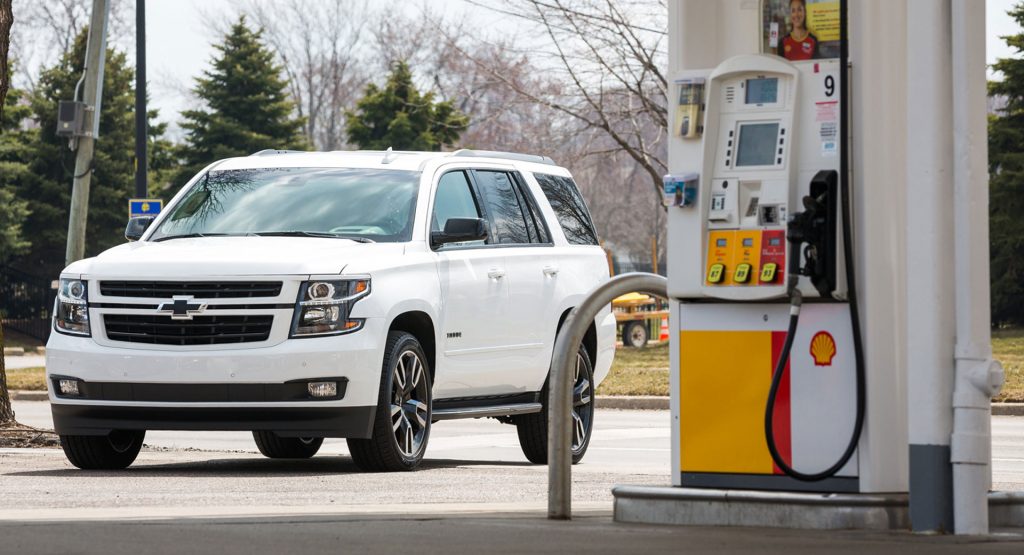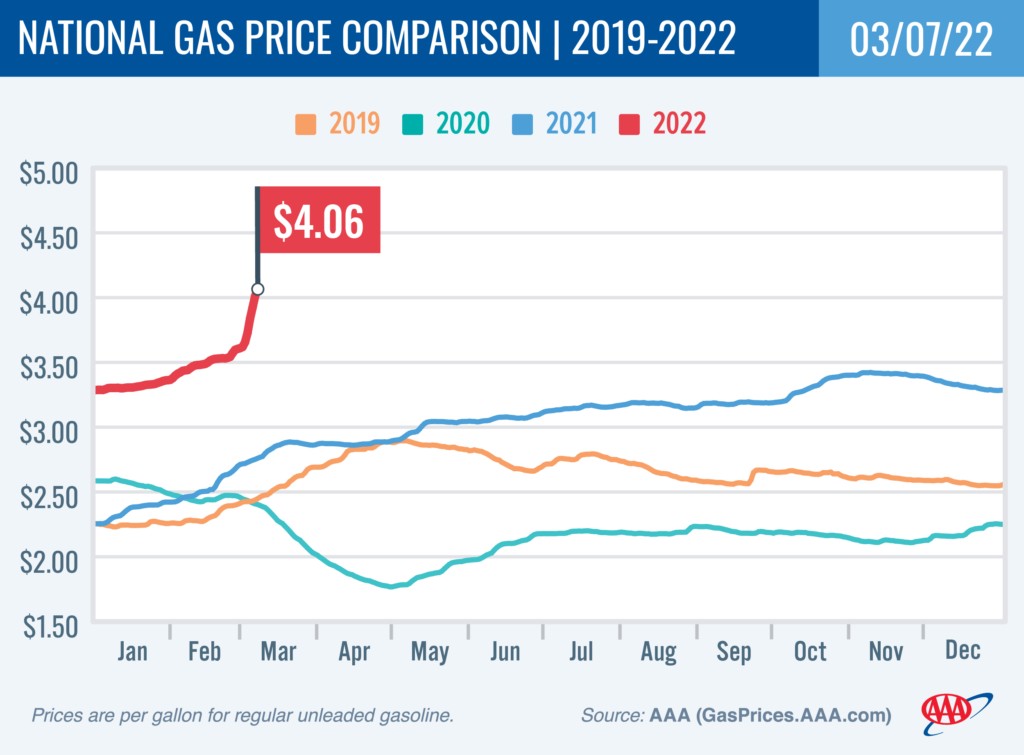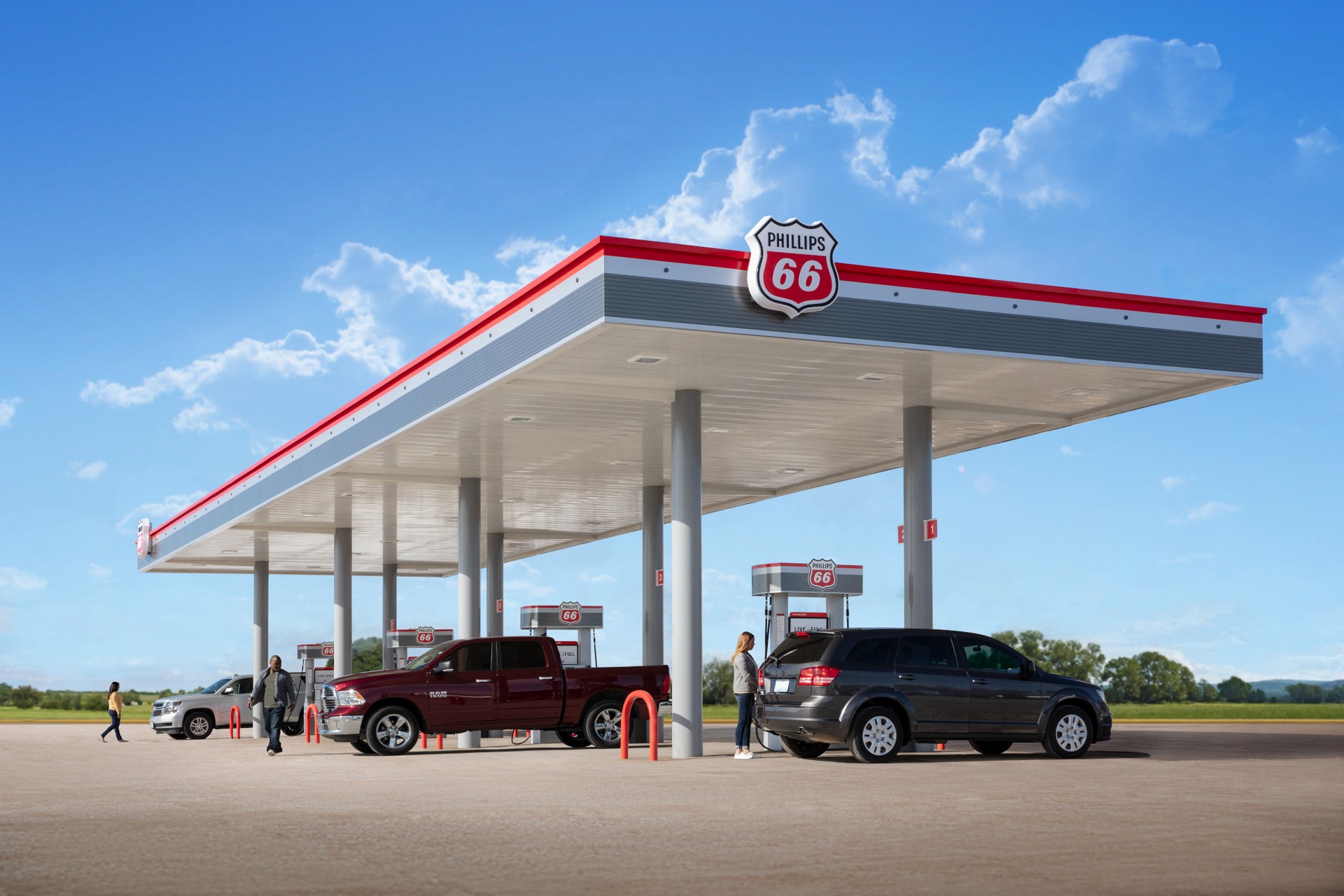If you’ve filled up recently, you’ve undoubtedly experienced pain at the pump as AAA is reporting the national average for a gallon of gasoline has soared to $4.06.
That’s up 45 cents from a week ago, 62 cents more than a month ago, and $1.30 more than a year ago. In fact, AAA notes the “national average has not been this high since July 2008.”
The dramatic increase is due to skyrocketing crude oil prices, which climbed from $91.32 per barrel on February 7th to $120.77 as of this writing. That’s a significant jump and the increase began shortly after Russia’s invasion of Ukraine on February 24th.
QOTD: How High Would Gas Prices Have To Get Before You’d Consider Something More Economical?
To combat surging prices, the International Energy Agency announced its 31 members will release 61.7 million barrels of crude oil from their strategic reserves. This is the largest coordinated release since the organization was founded in 1974, but AAA notes the “impact on pricing has been limited given that the amount of oil planned for release is small in comparison to the amount that flows daily from Russia to other countries around the globe.” To make matters worse, data from the U.S. Energy Information Administration showed gasoline demand increased while supplies decreased by 500,000 barrels last week.
While the national average price of gasoline is $4.06 per gallon, prices vary by location. Gasoline is most expensive in California with an average price of $5.34 per gallon, while other pricey states include Hawaii ($4.69), Nevada ($4.59), Oregon ($4.51), and Washington ($4.44).
That brings us to our question of the day, how much are you paying to fill up? In Michigan, I paid $3.89 per gallon yesterday but that same station is now charging $4.25 today. That’s undoubtedly expensive, but our European readers will likely call it cheap.






